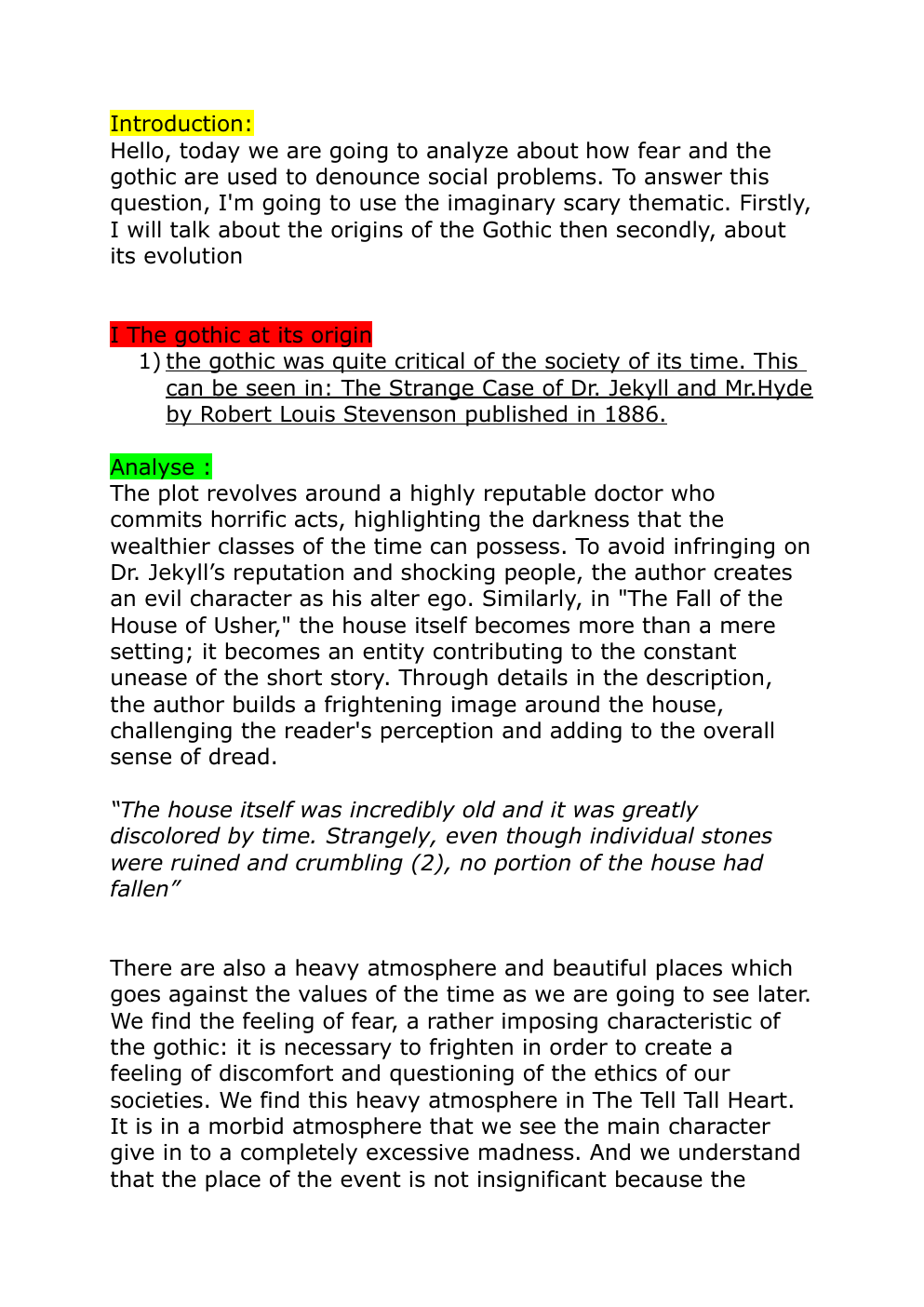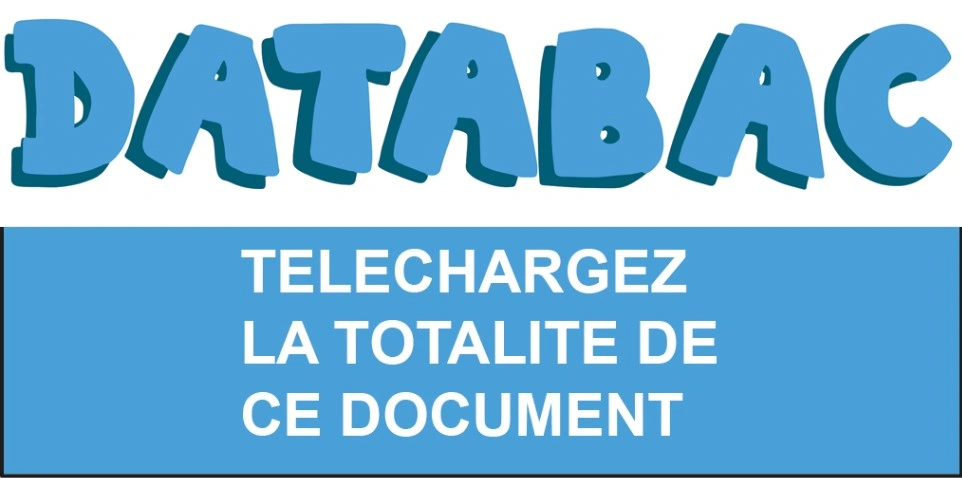Oral LLCE 1ère: The gothic at its origin
Publié le 28/04/2024
Extrait du document
«
Introduction:
Hello, today we are going to analyze about how fear and the
gothic are used to denounce social problems.
To answer this
question, I'm going to use the imaginary scary thematic.
Firstly,
I will talk about the origins of the Gothic then secondly, about
its evolution
I The gothic at its origin
1) the gothic was quite critical of the society of its time.
This
can be seen in: The Strange Case of Dr.
Jekyll and Mr.Hyde
by Robert Louis Stevenson published in 1886.
Analyse :
The plot revolves around a highly reputable doctor who
commits horrific acts, highlighting the darkness that the
wealthier classes of the time can possess.
To avoid infringing on
Dr.
Jekyll’s reputation and shocking people, the author creates
an evil character as his alter ego.
Similarly, in "The Fall of the
House of Usher," the house itself becomes more than a mere
setting; it becomes an entity contributing to the constant
unease of the short story.
Through details in the description,
the author builds a frightening image around the house,
challenging the reader's perception and adding to the overall
sense of dread.
“The house itself was incredibly old and it was greatly
discolored by time.
Strangely, even though individual stones
were ruined and crumbling (2), no portion of the house had
fallen”
There are also a heavy atmosphere and beautiful places which
goes against the values of the time as we are going to see later.
We find the feeling of fear, a rather imposing characteristic of
the gothic: it is necessary to frighten in order to create a
feeling of discomfort and questioning of the ethics of our
societies.
We find this heavy atmosphere in The Tell Tall Heart.
It is in a morbid atmosphere that we see the main character
give in to a completely excessive madness.
And we understand
that the place of the event is not insignificant because the
author gives very precise descriptions of the house as if to
leave us clues to his madness.
This is very typical of....
»
↓↓↓ APERÇU DU DOCUMENT ↓↓↓
Liens utiles
- Oral LLCE Dossier Spécialité English
- Exemple d'un sujet d'oral de bac de LLCE
- oral llce
- oral dossier llce anglais
- Grand oral llce: Est-il possible de déconstruire les préjugés de notre société afin de se construire soi-même ?

































